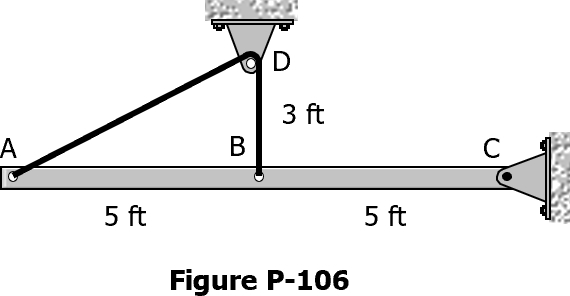Problem 531 | Friction
Problem 531
A uniform plank of weight W and total length 2L is placed as shown in Fig. P-531 with its ends in contact with the inclined planes. The angle of friction is 15°. Determine the maximum value of the angle α at which slipping impends.

- Read more about Problem 531 | Friction
- Log in to post comments



